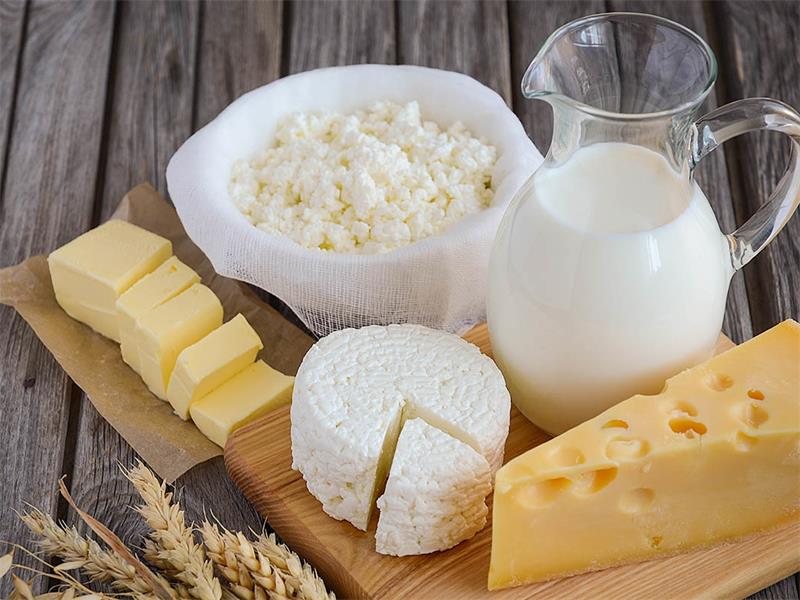Contents
Introduction
The Toxins in Your Home
Your home is where you should feel safe and protected, but did you know that it could be harboring hidden dangers? Toxins are harmful substances that we encounter in our everyday lives, including in our homes.
They can come from many sources such as cleaning products, furniture, and building materials. Exposure to these toxins can increase the risk of health problems like cancer, respiratory issues, and developmental delays.
The Importance of Reducing Exposure to Toxins
Reducing your exposure to toxins is crucial for maintaining good health and a safe living environment. Even small amounts of exposure over time can add up and lead to serious health problems. Children are particularly vulnerable since their developing bodies are more susceptible to toxins than adults.
By taking steps to reduce your exposure to toxins at home, you’re not only protecting yourself but also your family members. It’s important to be proactive in identifying potential sources of toxins and making changes where possible.
What You Can Do Now
There’s no need to panic about the presence of toxins in your home since there are practical steps you can take right now towards a healthier living environment. In the following sections, we’ll explore some common sources of toxins in the home and provide tips on how to reduce your exposure. By implementing these changes gradually over time, you’ll be well on your way towards a happier and healthier lifestyle for both you and your loved ones!
Identify Common Toxins in Your Home
When it comes to reducing your exposure to toxins in your home, the first step is identifying where these toxins may be lurking. Unfortunately, many common household items contain harmful chemicals that can have negative effects on our health. Here are a few of the most common toxins found in homes:
Lead
Lead is a toxic metal that was commonly used in paint until it was banned in 1978. If you live in an older home, there’s a chance that lead-based paint may still be present on your walls or furniture.
Exposure to lead can cause serious health problems, especially for children and pregnant women. If you suspect lead may be present in your home, it’s important to have it tested by a professional.
Asbestos
Asbestos is another dangerous material that was commonly used in buildings until the 1980s. It’s often found in insulation and roofing materials, and exposure to asbestos can cause lung cancer and other respiratory problems. If you suspect that you have asbestos in your home, do not attempt to remove it yourself – this should only be done by professionals.
Mold
Mold is a type of fungus that grows indoors and thrives in damp environments like bathrooms and basements. Exposure to mold can cause allergic reactions, asthma attacks, and other respiratory problems.
To identify mold growth in your home, look for signs like discoloration or musty odors. By identifying these common toxins in your home and learning how to spot them early on, you’ll be able to take steps towards reducing their presence and keeping yourself and your family safe from harm.
Use Natural Cleaning Products
The Dangers of Traditional Cleaning Products
Traditional cleaning products contain toxic chemicals that can harm both the environment and your health. These chemicals can cause skin irritation, respiratory problems, and even more severe health issues with prolonged exposure.
Common chemicals found in traditional cleaning products include ammonia, bleach, phthalates, and parabens. Not only are these chemicals harmful to humans, but they also contribute to the pollution of our waterways and harm aquatic life.
Natural Cleaning Solutions
Fortunately, there are many natural cleaning solutions that are effective at removing dirt and grime while being safe for you and the environment. Some examples of natural cleaning products include vinegar, baking soda, lemon juice, and essential oils. These natural ingredients have been used for centuries for their antibacterial and disinfectant properties.
One popular all-purpose cleaner is a mixture of equal parts vinegar (distilled white works best), water, and rubbing alcohol along with a few drops of essential oil for fragrance (if desired). This solution can be used on most surfaces in your home including countertops, floors, and even windows.
Effectiveness of Natural Cleaning Solutions
Many people assume that natural cleaners are not as effective as their chemical counterparts; however, this is not true! Natural cleaners can be just as effective at removing dirt and grime when used correctly.
They may require a little bit more elbow grease or soaking time than traditional cleaners but they get the job done without harming you or the environment. Overall using natural cleaning solutions is a great way to reduce your exposure to toxins in your home while keeping it clean!
Improve Indoor Air Quality
Breathing Easy: Common Indoor Air Pollutants
When you think of pollutants, you might imagine factories and busy highways. But did you know that indoor air can be more polluted than outdoor air?
Chemicals from cleaning products, mold spores, and gases emitted from furniture can all contribute to poor indoor air quality. Some common indoor air pollutants include:
-Volatile Organic Compounds (VOCs): Found in cleaning products, paints, and adhesives. -Formaldehyde: Found in some building materials like pressed wood products.
-Mold: Often found in damp areas like bathrooms and basements. -Carbon Monoxide: A colorless, odorless gas that can come from gas stoves or fireplaces.
These pollutants can cause a variety of health problems including respiratory issues, headaches, and fatigue. So how do we improve our indoor air quality?
Fresh Air: Tips for Improving Indoor Air Quality
One simple way to improve indoor air quality is by increasing ventilation. Open windows when possible to let fresh air circulate through your home. Another option is to install exhaust fans in your kitchen and bathroom to reduce moisture levels.
If you’re looking for a more comprehensive solution, consider investing in an air purifier. These devices filter out pollutants like pollen and dust from the air.
When choosing an air purifier, make sure it’s the right size for your room and has a HEPA filter – this type of filter captures particles as small as 0.3 microns. To keep the air free of chemicals, try switching to natural cleaning products without harsh chemicals or fragrances.
Opt for fragrance-free laundry detergents and fabric softeners as well. Keep an eye on your humidity levels – ideally between 30-50%.
You can monitor this with a hygrometer, a tool that measures humidity levels. If you notice dampness or mold, use a dehumidifier to reduce moisture levels and prevent mold growth.
Investing in good indoor air quality can have a big impact on your health. By reducing exposure to common indoor air pollutants, you can breathe easier and feel better overall.
Choose Non-Toxic Furniture and Decor
Avoiding Harmful Chemicals in Your Furniture and Decor
When it comes to decorating your home, you might not give much thought to the potential health hazards posed by the materials used in furniture and decor items. However, many common materials and finishes contain harmful chemicals like flame retardants that can lead to serious health problems. Flame retardants are often used in foam cushions for furniture, as well as certain fabrics, rugs, and curtains.
These chemicals have been linked to cancer, birth defects, and developmental issues in children. Formaldehyde is another chemical commonly found in furniture and decor items that can cause respiratory issues.
Alternatives for Non-Toxic Furniture and Decor Options
The good news is that there are many alternatives available for those looking to decorate their homes with non-toxic materials. When shopping for furniture or bedding items like pillows or comforters, look for those made with natural fibers like wool or organic cotton.
Solid wood furniture without added finishes or stains is also a great option. If you’re looking for decorative accessories like candles or room diffusers, opt for those made with all-natural ingredients like essential oils instead of synthetic fragrances.
Another great way to reduce your exposure to toxins through home decor is by choosing vintage or antique pieces that have already off-gassed any harmful chemicals they may have contained when new. Overall, taking care when selecting furniture and decor items can go a long way towards creating a healthier home environment free of harmful chemicals.
Reduce Plastic Use
Harmful Chemicals Found in Plastic Products
We’ve all heard about BPA, a chemical commonly found in plastics that can disrupt the endocrine system and potentially cause a range of health issues. But did you know that BPA-free products may not necessarily be safe either?
Many companies use alternatives to BPA, such as Bisphenol S (BPS) or Bisphenol F (BPF), which have been shown to be just as harmful as BPA. Other chemicals commonly found in plastic products include phthalates, which are used to make plastic more flexible but have been linked to reproductive issues and developmental problems.
PVC, common in shower curtains and other household items, releases toxic fumes when heated. And microplastics – tiny particles of plastic – can also leach into our food and water sources.
Tips for Reducing Plastic Use at Home
Reducing your plastic use isn’t always easy, but it’s an important step towards reducing your exposure to harmful chemicals. Here are some tips for getting started: – Bring your own reusable bags to the grocery store instead of using single-use plastic bags.
– Invest in a reusable water bottle or travel mug instead of buying bottled water or coffee cups. – Choose glass or stainless steel food storage containers instead of plastic ones.
– Avoid buying foods packaged in plastic whenever possible – opt for fresh produce or items packaged in paper or glass. – If you do buy products with plastic packaging, see if they offer a bulk option so you can buy larger quantities with less overall packaging.
– Recycle any plastics you do use properly – check with your local recycling program to see what types of plastics they accept. By reducing your reliance on single-use plastics and choosing safer alternatives whenever possible, you’ll be taking an important step towards creating a healthier home environment – both for you and for the planet.
Conclusion
Recap of the importance of reducing exposure to toxins at home
Our home is supposed to be a safe haven, but it can also be a source of toxicity if we’re not careful. We only have one body, and we owe it to ourselves and our loved ones to minimize our exposure to harmful substances found in our homes. The good news is, there are plenty of things you can do to make a positive impact on your health and reduce your exposure to toxins in your home.
We’ve gone through several ways to reduce toxic exposure, including identifying common toxins in your home, using natural cleaning products, improving indoor air quality, choosing non-toxic furniture and decor, and reducing plastic use. By making simple changes like switching to natural cleaning products or investing in an air purifier, you’ll be taking important steps towards a healthier living space.
Encouragement to take action towards a healthier home environment
Now that you know more about how toxins can affect your health and ways you can reduce toxic exposure in your home, it’s time for action! Start by identifying the common toxins present in your living space. If you suspect any issues with mold or asbestos, seek professional help immediately.
Next up are cleaning products – switch out store-bought cleaners for natural alternatives. For better indoor air quality purchase an air purifier or open windows more often.
For furniture choose non-toxic materials such as wood or organic cotton. Small changes add up over time!
Reducing toxic exposure may seem difficult at first but remember that every little step counts toward creating a safer environment for yourself and those around you. By taking action today towards minimizing toxin presence at home will go a long way toward long-term health benefits!













